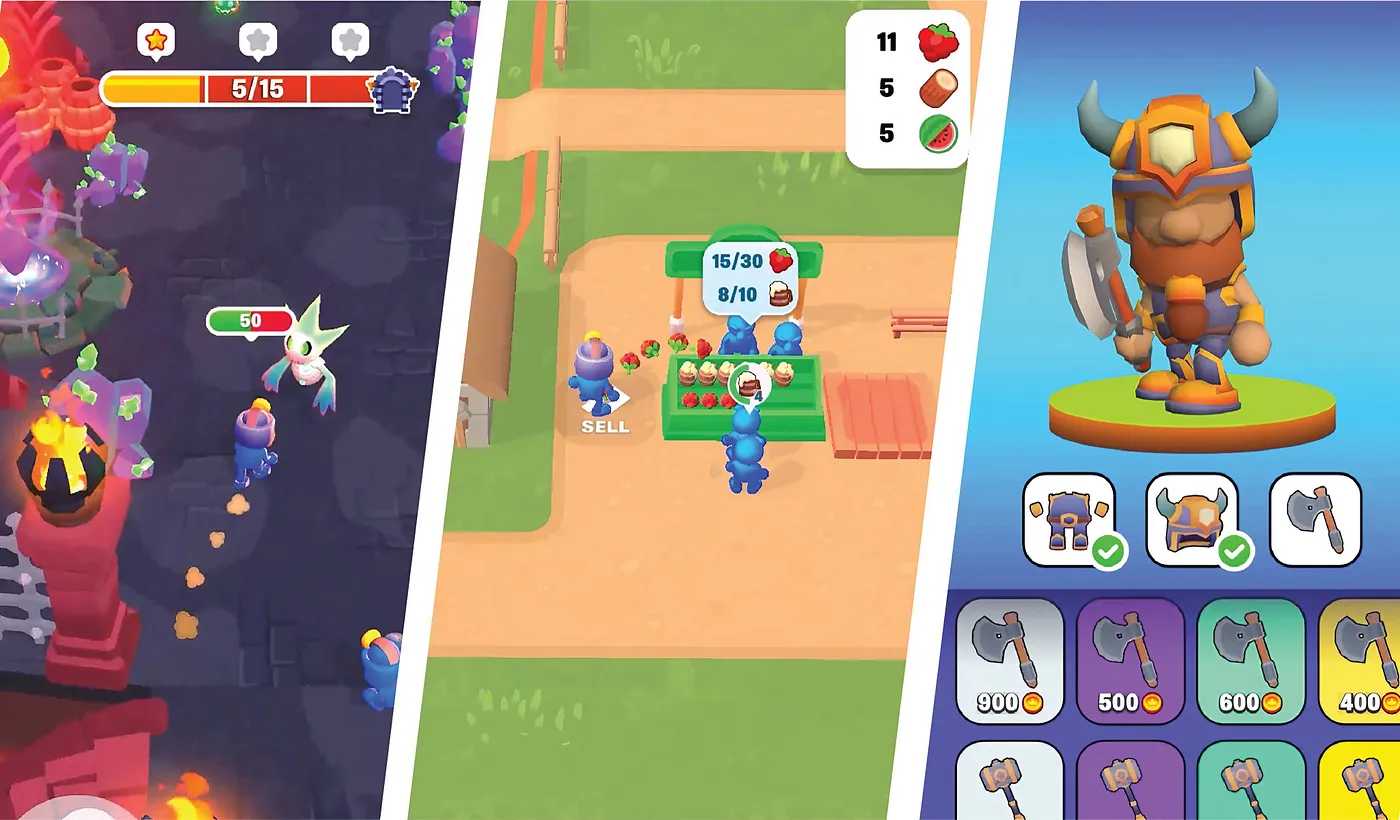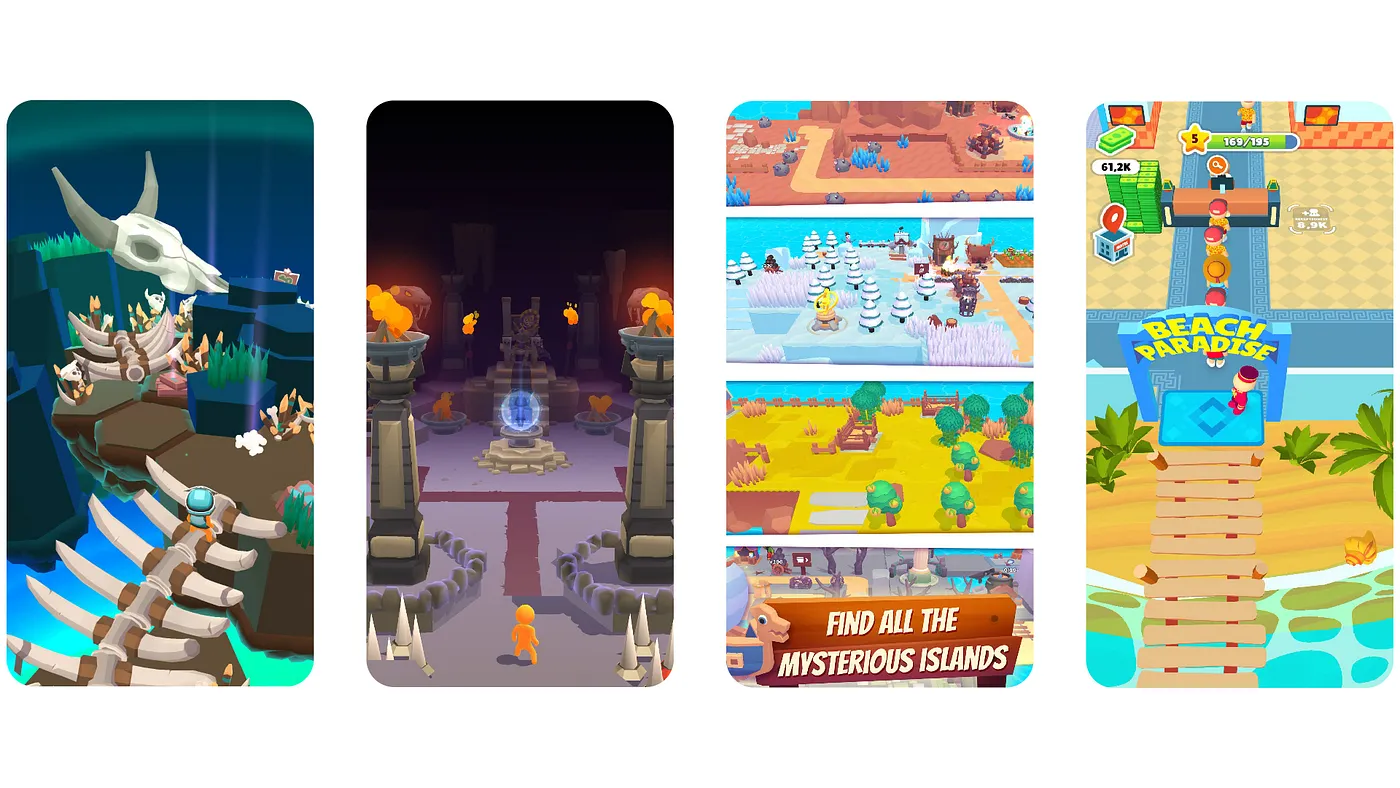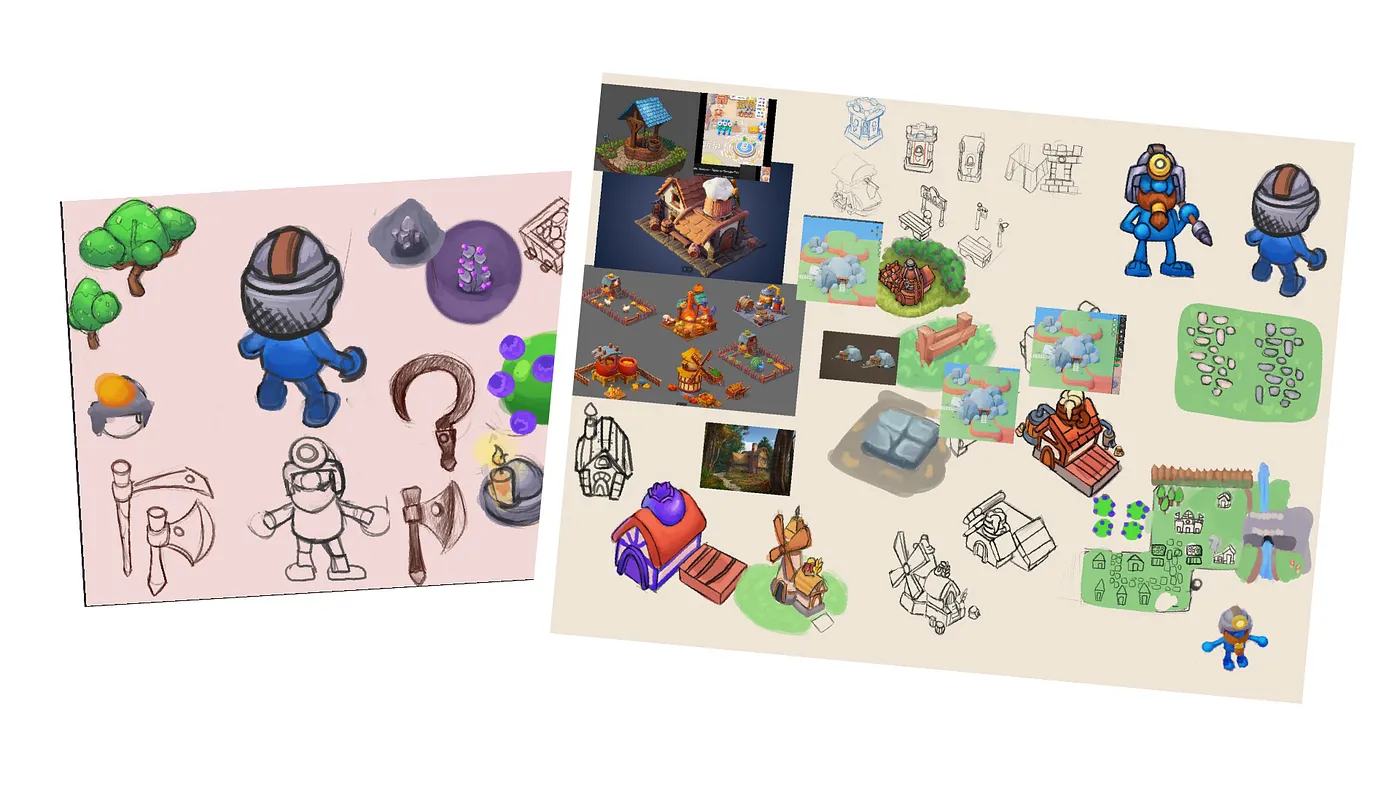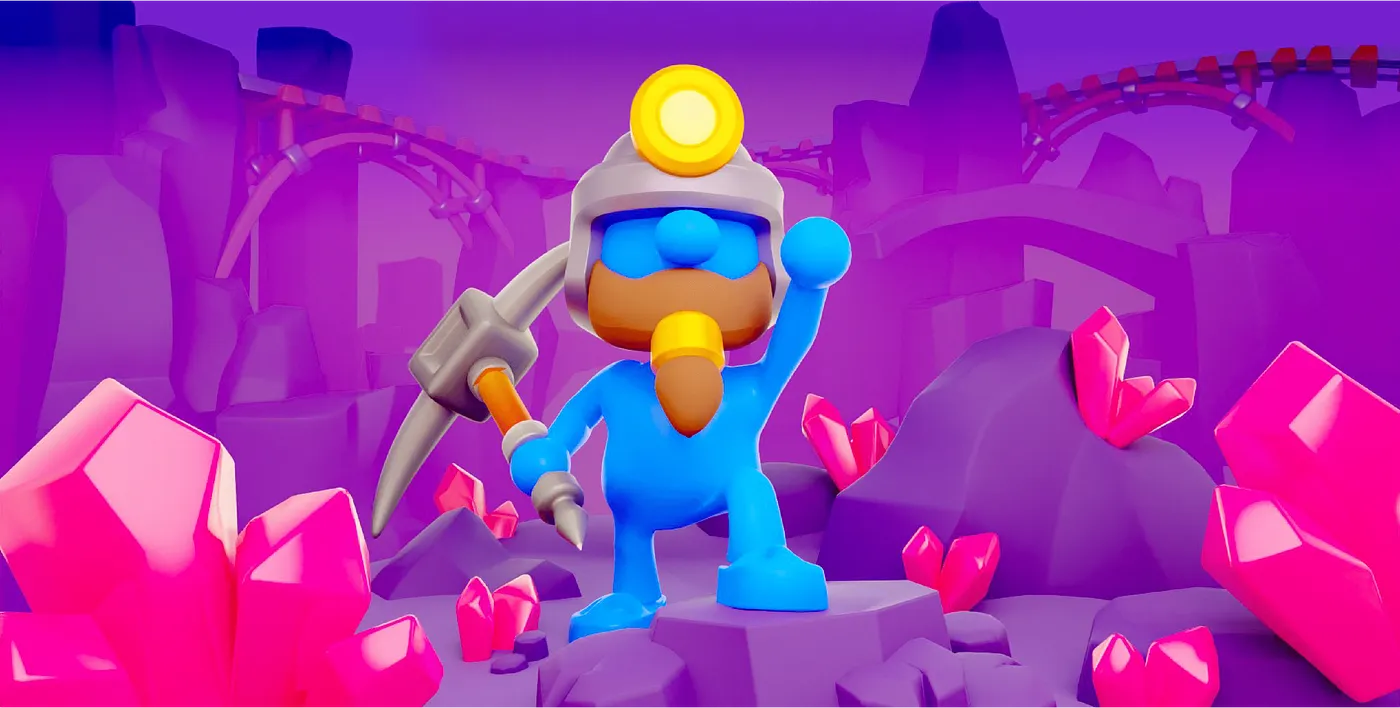
Mobile games have become a significant part of our daily entertainment, offering a diverse range of experiences for users. Ever wondered how these games are made? In this step-by-step guide, we’ll walk you through the process of creating a mobile game.
Ideation
Ideation in game development is both an art and a strategic exercise. It requires a balance between creative freedom and focused decision-making. As developers navigate this phase, they engage in activities ranging from brainstorming and research to concept exploration and refinement. The goal is to emerge with a game concept that is not only original and compelling but also resonant with the intended audience and viable in the current gaming landscape. Coming up with a unique and compelling game idea is the crucial starting point for any successful game development journey. Here are some tips to help you spark creativity and find that perfect game concept:

1. Initiate with Market Analysis:
Commence your exploration by conducting a thorough market analysis to identify current popular trends. Understanding the gaming landscape provides a solid foundation for the creative process. The detailed list of useful apps and sites can be found here.
2. Explore Social Media for Trends:
Investigate social media platforms to discover emerging trends that can be seamlessly integrated into your game concept. Social media serves as a dynamic source for staying updated on the latest developments and preferences. Instagram, TikTok, X, and other popular social media platforms will keep you updated with the latest trends.
3. Generate Original Narratives and Mechanics:
Challenge yourself to conceive entirely new narratives and mechanics that haven’t yet gained prominence in the gaming charts. Pushing the boundaries of creativity ensures a fresh and distinct gaming experience. The new core gameplay or an outstanding meta game can be an exciting part of your game.
4. Innovate Existing Game Templates:
Examine existing game templates and introduce a creative twist to either the narrative or mechanics. This approach allows you to build upon established structures while injecting innovation into your game concept. It can be useful and easier to make your game idea based on the proven mechanics because the market has already approved it.
5. Adapt Successful Elements:
If you notice a particular mechanic or narrative performing well in the charts, consider adapting it for a different sub-genre. This strategy combines proven success with a tailored approach to cater to specific gaming audiences. Taking some eye-catching elements that will fit into your gameplay will make it stand out from the crowd.
6. Combine Core Elements from Different Games:
Take inspiration from two existing, popular games by extracting key elements such as core mechanics or themes. Combine these elements creatively to craft a completely new and unique gaming concept. Adding new meta to an existing core or vice versa can be a great starting point.
Pre-Production
The pre-production phase in mobile game development is the initial stage where foundational elements are planned. Game studios conduct market analysis, and create a comprehensive design document outlining the narrative, characters, and gameplay mechanics. Key aspects include:

Design Document: A detailed document guides the development process by outlining the game’s story, characters, and overall design. It serves as a reference for the team throughout the project.
Scheduling: Project schedules are created, specifying milestones and deadlines for different phases of development. This ensures a well-organized workflow and timely completion.
Art Style and Visual Direction: The artistic direction, including the game’s art style, color palette, and visual aesthetics, is determined. Concept art may be created to provide a visual representation of the intended look and feel of the game.
Prototyping: Initial versions of the game are developed to test core gameplay mechanics and assess concept feasibility. Prototyping helps identify potential issues early on, refining the game’s design before full-scale development begins.
Post-Production
The post-production phase is the final stage of game development, where the game is made ready for launch. This phase has three main steps:

Development: This is where the game design and assets are brought to life using a game engine, which is a software that helps create games. The development process involves coding the game logic, functionality, and user interface using a scripting language or a visual scripting tool; making the game graphics, sound, and music using various tools and software; and animating the game characters, objects, and effects to make them move and interact.
Testing: This is where the game is checked for any problems, such as bugs, errors, or performance issues. The testing can be done by hand or by using tools and methods, such as unit testing, integration testing, regression testing, and beta testing. The testing helps to make sure that the game works well and is compatible with different devices and platforms.
Polishing: This is where the game is improved and enhanced by adding details, effects, and features. The polishing can include tasks such as balancing the game difficulty, optimizing the game performance, improving the game graphics and sound, and adding features such as achievements, leaderboards, and social media integration. The polishing helps to make the game more fun, immersive, and satisfying for the players.
Launch
The launch phase is the last stage of mobile game development, where the game is released to the global market and reaches millions of players. This phase involves various tasks such as testing KPIs of a game, working with publishers, soft-launching, and launching. The launch phase can be divided into three parts:

Pre-launch: is the phase where the game is prepared for the launch, by finalizing the marketing strategy, creating the app store assets, setting up the analytics and monetization tools, and getting the game approved by the app stores. The pre-launch phase also involves testing the key performance indicators (KPIs) of the game, such as retention, engagement, conversion, and revenue. The KPIs help to measure the success of the game and identify the areas for improvement.
Soft-launch: is the phase where the game is released to a limited geographic area or a selected group of players, to gather feedback, data, and insights. The soft-launch phase allows the developers to fine-tune the game, optimize the performance, fix the bugs, and adjust the monetization and marketing strategies. The soft-launch phase also helps to validate the marketability and scalability of the game, and to estimate the potential return on investment (ROI). Some of the factors to consider when choosing a soft-launch market are the language, the culture, the device penetration, the network quality, and the competition.
Global launch: is the phase where the game is released to the global market and becomes available to all players. The global launch phase involves executing the marketing campaigns, acquiring and retaining users, and maximizing the revenue. The global launch phase also involves working with publishers, who can provide financial support, distribution channels, user acquisition expertise, and monetization strategies. Some of the benefits of working with publishers are the access to a large and loyal audience, the increased visibility and discoverability, the reduced risk and cost, and the feedback and guidance.
The Conclusion
In conclusion, the game development process is a multifaceted journey that combines creativity, technical skill, and strategic planning. From the initial spark of an idea to the meticulous efforts of production, and finally to the crucial stages of post-production, each phase plays a pivotal role in bringing a game to life. This journey is not just about creating a product; it’s about crafting an experience that resonates with players and stands the test of time. As we look forward to the future of gaming, it’s clear that the passion, creativity, and dedication present in today’s game development process will continue to push the boundaries of what is possible, creating worlds beyond our imagination and experiences beyond our wildest dreams.